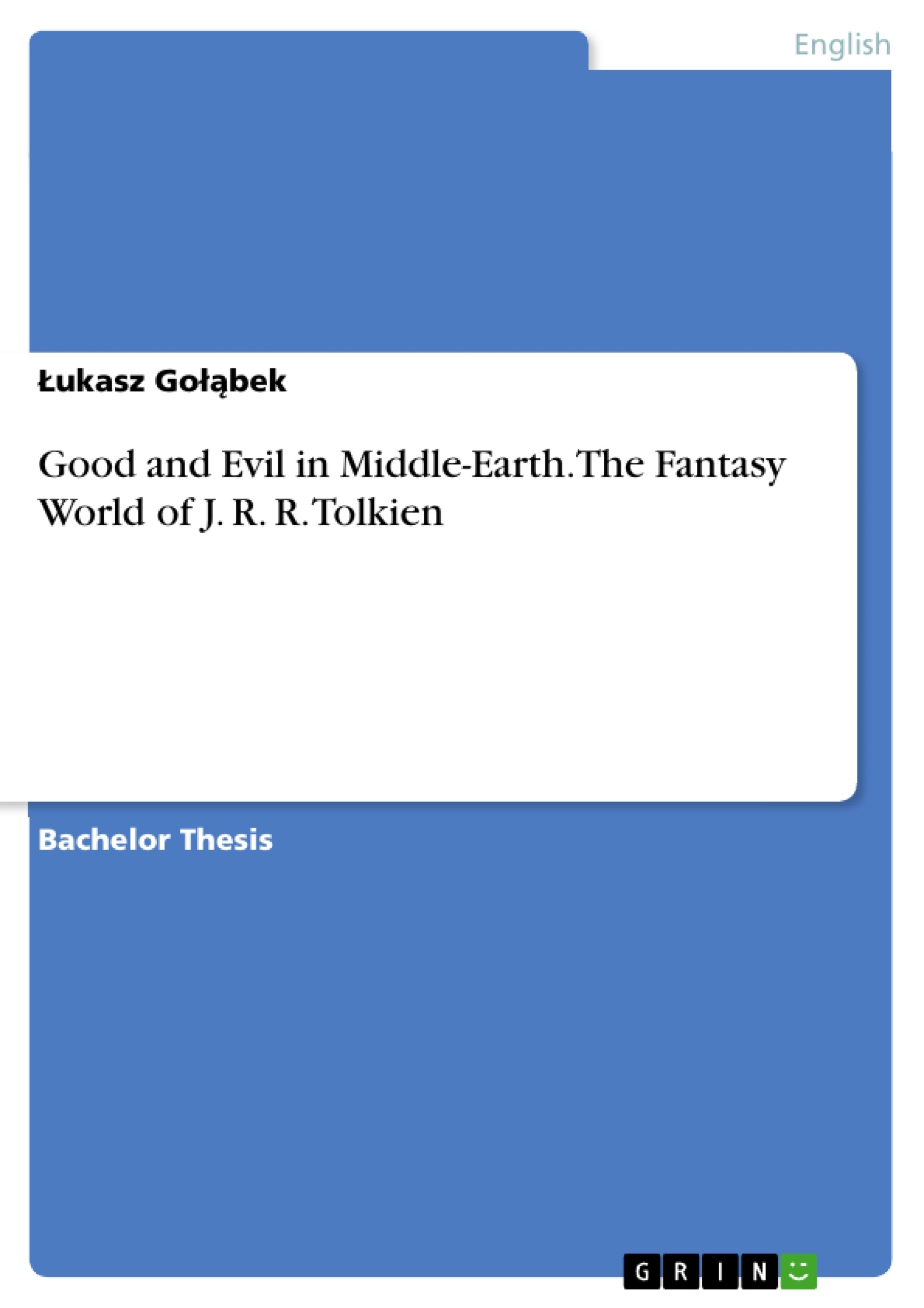Who really was the man who wrote the “bible of fantasy” and what about his beautifully designed world of Middle-Earth?
Aim of this work is to present the problem of good and evil in Tolkien's output. His work contributed to a number of fantastic novels, films and computer games in which we can find the motif of darkness and light.
The first part of my work I will dedicate as a whole to the genre of fantasy. I will present a bibliography of the outstanding English philologist and writer. I will explain the importance of the fantasy genre and discuss the origins of his works, and how these books impact on other writers. This chapter will also contain the impact of fantasy on our dreams and what we really obtain while reading fantasy literature.
In the second chapter I will start with Tolkien's biography. Then I am going to characterize the world which Tolkien presented in his works. Every character has to complete a specified mission and some of them are heroes.
I will discuss major characters based on hero's journey, the term coined by Joseph Campbell. Relations between them mirror relations in the real world although distant. Tolkien created in his novels everything from geography, flora and fauna, human and superhuman races to complete histories, beliefs and traditions.
In the third chapter I will analyze two concepts of the world of Middle-Earth that Tolkien has created in his novels, good and evil. They fit in literature's mainstream with universal messages, except that, all of considerations are a part of the fantasy genre convention.
Each of these elements has many meanings in the works of Tolkien and acts as a symbol like the One Ring which will be fully described in my work.
Inhaltsverzeichnis (Table of Contents)
- INTRODUCTION
- 1. FANTASY AS A GENRE.
- 1.1 DEFINING THE FANTASY GENRE.
- 1.2 DIVISION OF FANTASY SUB-GENRES
- 1.3 THE ORIGIN OF THE TOLKIEN'S OUTPUT.
- 1.4 IMPACT ON OUR IMAGINATION
- 2. JOHN RONALD REUEL TOLKIEN AND THE FANTASY WORLD OF MIDDLE-EARTH
- 2.1 INTRODUCTION
- 2.2 TOLKIEN'S LIFE..
- 2.3 ELEMENTS OF THE PRESENTED WORLD.
- 2.4 HERO'S JOURNEY - MONOMYTH ON SELECTED CHARACTERS FROM TOLKIEN'S OUTPUT..
- 3. THE PROBLEM OF GOOD AND EVIL.....
- 3.1 INTRODUCTION
- 3.2 THE CASE OF GOLLUM
- 3.3 ELVES.
- 3.4 DARKNESS AND LIGHT.
- 3.5 THE ONE RING
- GENERAL CONCLUSION
- POLISH SUMMARY
- BIBLIOGRAPHY
- INTERNET SOURCES
Zielsetzung und Themenschwerpunkte (Objectives and Key Themes)
This work aims to explore the theme of good and evil in the fantasy world of Middle-earth, created by J.R.R. Tolkien. The author analyzes Tolkien's works in the context of the fantasy genre, exploring the origins of Tolkien's output, the impact of fantasy on readers' imaginations, and the complexities of morality within the presented world.
- The definition and evolution of the fantasy genre
- J.R.R. Tolkien's life and influences
- The creation of the world of Middle-earth, including its unique elements and characters
- The concept of good and evil in Tolkien's works, with a focus on the character of Gollum
- The symbolism of darkness and light and the One Ring
Zusammenfassung der Kapitel (Chapter Summaries)
The first chapter examines the fantasy genre, exploring its definition, sub-genres, origins, and its impact on readers' imaginations. The second chapter focuses on J.R.R. Tolkien, providing biographical information and analyzing the world of Middle-earth. The third chapter delves into the concept of good and evil, analyzing the character of Gollum and the symbolism of the One Ring.
Schlüsselwörter (Keywords)
The key terms and concepts explored in this work include: fantasy genre, J.R.R. Tolkien, Middle-earth, good and evil, Gollum, the One Ring, darkness and light, hero's journey, monomyth, symbolism.
- Citar trabajo
- Łukasz Gołąbek (Autor), 2013, Good and Evil in Middle-Earth. The Fantasy World of J. R. R. Tolkien, Múnich, GRIN Verlag, https://www.grin.com/document/305333



